Palo Alto's Municipal Services Center is a sprawling maze of industrial activity -- a 16-acre complex where hardhats abound and utility trucks loaded with spools of electric wire stand alongside fire engines and as-yet-uninstalled gas lines, street signs, generators, sandbags, asphalt, rock and other utilitarian necessities.
Tucked between the Baylands and U.S. Highway 101, about a mile south of Oregon Expressway, the Municipal Services Center is a collection of concrete buildings shared by five departments -- Utilities, Public Works, Community Services, Police and Administrative Services. A shared warehouse is loaded with maintenance tools and supplies.
If University Avenue is the glitzy face of Palo Alto and Stanford Research Park is the city's high-tech soul, this vast compound is the city's guts. From this blue-collar base, city workers make sure that Palo Alto's potholes are repaired, its storm drains get cleared and its gas and electricity run unimpeded. This is where the city's vast fleet of vehicles is stored, fueled up and fixed. On a recent day at the mechanics' shop, a fire engine stood alongside a Public Works truck, a golf cart and the Police Department's mobile-operations vehicle.
The East Bayshore Road center is slated to only get busier in the coming years as Palo Alto embarks on what Mayor Yiaway Yeh called the "year of infrastructure investment and renewal." The effort kicked off last month, when the council received a long-awaited report from the specially appointed Infrastructure Blue Ribbon Commission -- a 17-member panel that had spent more than a year delving into the infrastructure problem. The group concluded that the city has about $41.2 million in deferred maintenance and that it has to increase its capital spending by $2.2 million a year to keep the city's streets, parks and facilities up to par. If the council proceeds with the report's recommendations and accelerates the city's infrastructure spending, much of the workload will fall on the roughly 300 workers based at the Municipal Services Center.
But the largest and most ambitious recommendations in the Infrastructure Blue Ribbon Commission report focus on the Municipal Services Center itself. Constructed in the early 1960s of "tilt-up" construction, the buildings' resilience during an earthquake has been called into question by numerous consultants.
Paul Dornell, who oversees the Public Works operations at the Municipal Services Center, puts it bluntly.
"These are the worst buildings you can possibly have in case of an earthquake," he said during a recent tour of the site.
In addition, the land on which the center sits has been eyed by the city as a potential location for auto dealerships, which would bring in much-needed sales-tax revenues.
The idea of moving the Municipal Services Center also arose during the Infrastructure Blue Ribbon Commission's study, but not because of the potential sales tax. Rather, the commission noted in its report, the center houses utilities and public-works operations that would be key during an emergency -- and its location to the east of 101 could pose a problem.
"In case of a major earthquake or other catastrophe that causes failure of freeway overpasses, emergency response is likely to be impaired," the report states, citing a study that found one in five freeway overpasses in the Bay Area would become impassable in a severe earthquake. "Developing a plan for a new operations center should consider siting it west of Bayshore to mitigate this potential problem. A secondary need is to site the operations center out of the flood zone or deal with flood risks in the construction plans."
Dornell said if a highway overpass collapsed in a major disaster, many of the city's emergency responders would be cut off from the city. The city's current emergency plan calls for public-works crews to basically create a new road on the fly to get across 101.
"We would basically have to build a road through 101," Dornell said. "Just bulldoze right across the highway."
It doesn't help that the center is located both in an active seismic zone (along with the rest of Palo Alto) and in a flood zone. The San Francisco Bay Conservation and Development Commission projects the sea level from the Bay could rise by 16 inches by the middle of the century and by 55 inches by the end of the century. A commission map illustrating the end-of-the-century rise shows the Municipal Services Center under water. Dornell said that because of the Municipal Services Center's critical functions during an emergency, the need to either upgrade or relocate the Municipal Services Center should be a leading priority for Palo Alto.
"The services we provide aren't as visible or as exciting as police and fire, but police and fire wouldn't be able to do much of what they do in an emergency without what we do here," he said.
Discussions about renovating the aged facility are far from new. In 1987, Palo Alto commissioned two architecture firms to complete a master plan for the Municipal Services Center, setting guidelines for the site's future use. Even then, the consultants had deemed the Municipal Services Center facilities as "functionally obsolete."
This decision was reaffirmed a decade later by engineering firm Damies & Moore, which deemed the buildings at risk of collapse and recommended replacing the entire facility. The city's Baylands Master Plan notes that in the event of an earthquake, the buildings at the Municipal Services Center "could be subjected to forces four times as great as they are capable of handling."
Palo Alto responded to the report in 1998 by reinforcing the buildings with seismic bracing. But despite this addition, the Infrastructure Blue Ribbon Commission points out, the buildings are not expected to be usable after major quakes. A more ambitious proposal, to replace the half-century-old buildings, has largely languished as the city has focused on other priorities, including the need for a new public-safety building and renovated libraries.
The Infrastructure Blue Ribbon Commission report returns the Municipal Services Center's future to the fore, urging the city to take a fresh look and study other uses for the land. These include what the commission called the "static option" -- upgrading the facilities but leaving existing functions intact -- and the "dynamic option," which would transfer some of the Municipal Services Center functions to other parts of the city and evaluate other uses for the Baylands property.
"Indeed, because of the emergency-response and disaster-recovery implications, these projects have some degree of urgency," the Infrastructure Blue Ribbon Commission report states.
Either option is expected to carry a bulky price tag. Previous estimates peg the cost of replacing the Municipal Services Center at about $93 million -- more than the costs of building a new public-safety building and renovating two obsolete fire stations combined. Another $6.9 million would be required to relocate the Animal Services, a squat facility that stands next to the Municipal Services Center (see sidebar). Together, the two projects would account for nearly half the cost of the major infrastructure projects identified by the commission.
Despite the hefty price tag and competing priorities, the commission wrote in the report that it believes "timely action is needed to make the necessary repairs to the Municipal Services Center and the Animal Services Center."
The prospect of city bulldozers sweeping across the highway after an earthquake isn't the only driver of the Infrastructure Blue Ribbon Commission recommendation to relocate services. Other factors include economic benefits and potential operational efficiencies for the departments, most notably the Utilities Department. The Infrastructure Blue Ribbon Commission report noted that Utilities currently works out of three different sites -- City Hall, the Municipal Services Center and rented space on Elwell Court, about half a mile south of the Municipal Services Center.
"Development of a new, consolidated operations center, including a multi-story office building in addition to the shops and other operations now at the MSC, would allow for increased efficiencies in the delivery of Utilities services," the report states.
The current setup keeps the Utilities Department's engineering and operational divisions at different locations. Dornell, who worked for Utilities before moving to Public Works, said engineers and operations staff members have to communicate on a daily basis, a task that is slightly complicated by their physical separation from one another. And while the advent of iPads, iPods and other technology have narrowed the gap, city officials acknowledge that consolidating operations could make things more efficient.
Debra Katz, a spokesperson for the Utilities Department, concurred that the idea of consolidating utilities operations sounds appealing, though she noted that there are some advantages to keeping utilities officials at sites where they can easily interact with other departments. The devil, she said, is in the details. A setup that benefits communications within the department can at the same time hinder its ties with the Public Works, Planning and Police departments. Still, certain things are best communicated face to face, Katz said.
"Engineering staff oversee a lot of projects that involve the operations crew, and you currently really don't have the synergy that comes with a situation when you can just walk down the hall," Katz said. "Certain communications don't happen if you can't quickly or easily see someone."
---
Aside from earthquakes and floods, perhaps the biggest driver behind the "dynamic" option is, well, drivers. The past decade has been a bitter one for local car dealers thanks in large part to the economic downturn and pressure from manufacturers to relocate to locations that are visible from the freeway.
The possibility of car dealerships leaving Palo Alto is far from hypothetical. In 2001, the city's seven dealerships brought in $3.1 million in sales-tax revenues. The number dipped to $1.6 million in 2006 and to less than $1.3 million in 2010. By 2011, Ford and Nissan departed from their El Camino Real locations and Carlsen Porsche vacated its site on Embarcadero Road. The revenues remained under $1.3 million in fiscal year 2011, according to the city's recent Comprehensive Annual Financial Report. When McLaren-Fisker last year set up a dealership on El Camino Real and Arastradero Road, it was a rare bit of good news after a decade of dramatic decline.
Palo Alto officials have been trying to reverse the trend for years, and the Municipal Services Center site, which practically rubs up against the freeway, has long been at the heart of discussions. Since 2006, city officials have been talking to auto dealers about a possible "land swap" that would give dealers the coveted location. Deputy City Manager Steve Emslie, who has been leading the discussions, said the dealers had mandates from manufacturers to move to freeway-visible locations -- moves would have profound implications for their bottom lines (and, consequently, to the city's bottom line through sales taxes).
"If they got a site that was visible from the freeway, their sales would be expected to substantially increase -- double or triple," said Mark Michael, an Infrastructure Blue Ribbon Commission member who chaired a subcommittee charged with evaluating the Municipal Services Center site.
When the recession hit in 2008, taking a bite out of auto sales, the mandates were relaxed and talks of a possible land swap were put on hold. But city officials remain concerned about the prospect of auto dealers leaving town and taking their sales-tax revenues with them. Conversations about a potential land swap are now resurfacing.
"If we can't accommodate them in Palo Alto, they can move up the road a bit and we would then lose all that benefit," Emslie said. "It's significant. It's not unusual to get $500,000 per car dealer. A high-performing dealer, one with freeway visibility, can be $1 million-plus."
The commission acknowledged that finding a new 16-acre site for the Municipal Services Center could prove difficult, if not impossible. Aside from financial considerations, finding alternative sites for city operations remains the most perplexing piece of the puzzle.
So the commission recommends examining an option in which Municipal Services Center functions are moved to multiple locations. Potential properties include the 7-acre Honda and Audi sites on Embarcadero Road (as a possible land swap) and the 6.5-acre Los Altos Sewage Treatment Plant land just north of San Antonio Road, east of 101, according to the report.
"There's not a whole lot of independent vacant land sitting around in Palo Alto," Emslie said.
But he noted that the interest from auto dealers, after waning during the recession, remains strong.
"This is like their dream market. For them to be here -- this is the dream demographic."
---
Palo Alto officials were eying major changes at the Municipal Services Center even before the infrastructure commission released its report. The council passed a capital budget last year that includes $100,000 to study options for upgrading or relocating Municipal Services Center and Animal Services Center functions. The council also included $100,000 to upgrade lighting, mechanical and electrical equipment at three Municipal Services Center buildings. The budget notes that the systems "no longer support the current operation at this site."
Public Works Director Michael Sartor said that both of these capital projects are currently on hold, pending council direction.
On Jan. 17, in their first discussion of the Infrastructure Blue Ribbon Commission report, council members expressed a willingness to consider major changes to the Municipal Services Center, though their enthusiasm was tempered by skepticism about finding land in other parts of the city for the operations. Councilman Larry Klein said he couldn't think of a parcel large enough to accommodate the functions, and a new study would be unlikely to change that fact.
"I scratch my head at that and say, 'Where?'" Klein said. "Does anyone have ideas where we can have anything like the necessary space west of 101?"
Councilwoman Nancy Shepherd said she would like the city to consider the site for uses that would be "less showy" than auto dealerships -- things relating to Baylands activities such as kayaking or bike rentals.
Councilwoman Karen Holman wondered about the impact of auto dealerships on the Baylands, particularly if the dealership were to install billboards. She suggested moving some of the Municipal Services Center operations to other nearby sites, such as near the fields on Geng Road. This would open up the East Bayshore land for uses that would have a low impact, such as playing fields, she said.
"While (the dealerships) are not on the Baylands, they really would have a visual impact on the Baylands and would change what we carried on as policy and character," Holman said.
Mark Michael, the Infrastructure Blue Ribbon Commission member who evaluated the Municipal Services Center site and who was recently appointed to the city's Planning and Transportation Commission, agreed that any plan to revitalize the East Bayshore property as a commercial hub must be particularly sensitive to the Baylands. But changes could actually benefit nature lovers by creating new amenities for them, he said.
"I think doing something that would (be) economically beneficial along East Bayshore wouldn't necessarily be unattractive or detract from enjoyment of nature by people," Michael said. "It might in fact bring people closer to appreciating nature."
Michael also said that if the city were to acquire the auto dealers' Embarcadero Road properties in a land swap -- whether part of the Municipal Services Center were to relocate there are not -- the city could try to attract restaurants and other establishments to the site. That, in turn, would support the city's airport and golf course, both of which are located along Embarcadero.
Related stories:
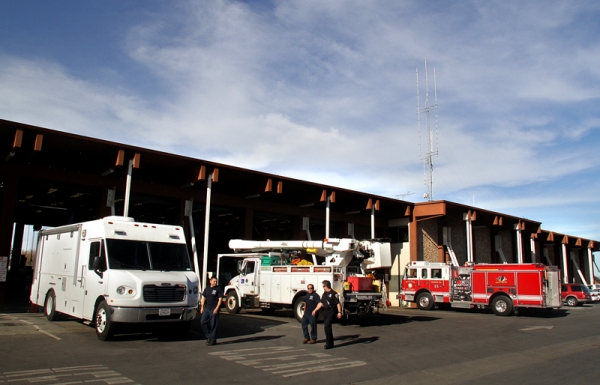
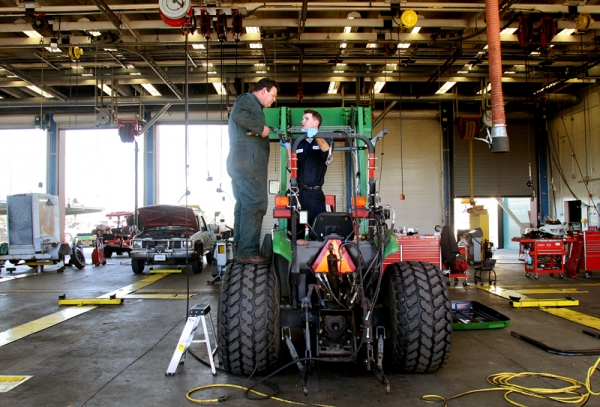
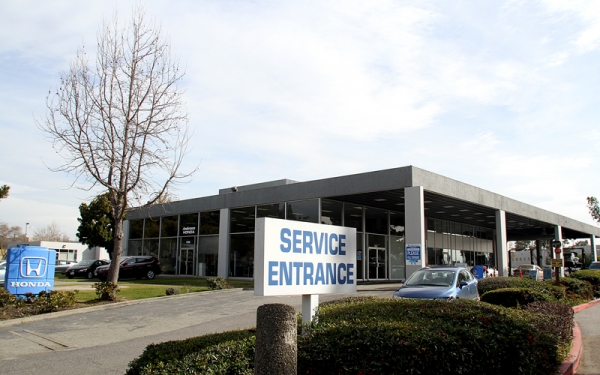
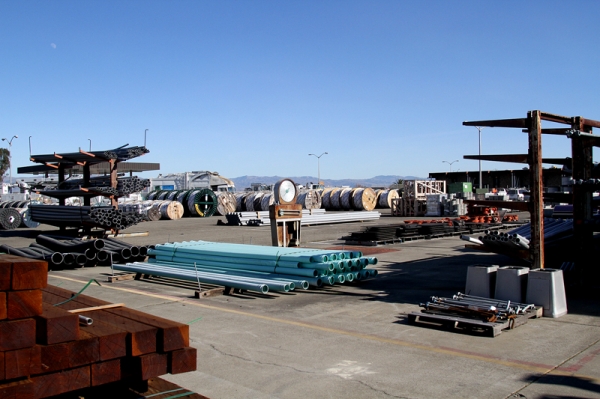
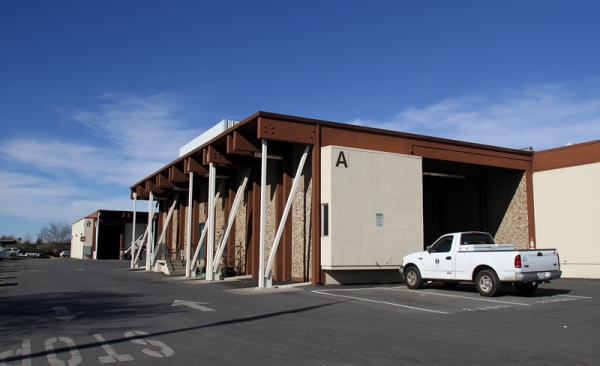
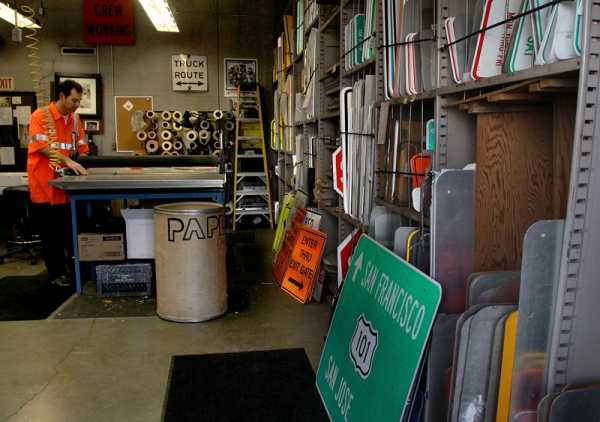
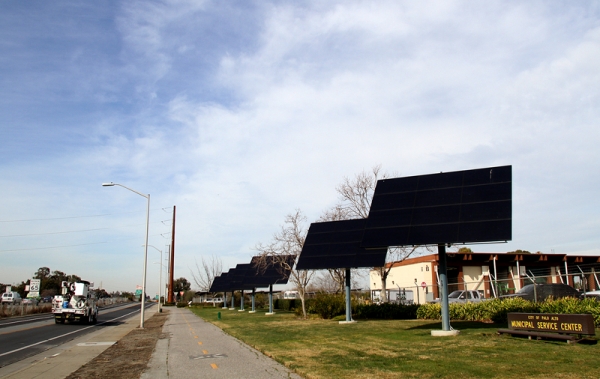
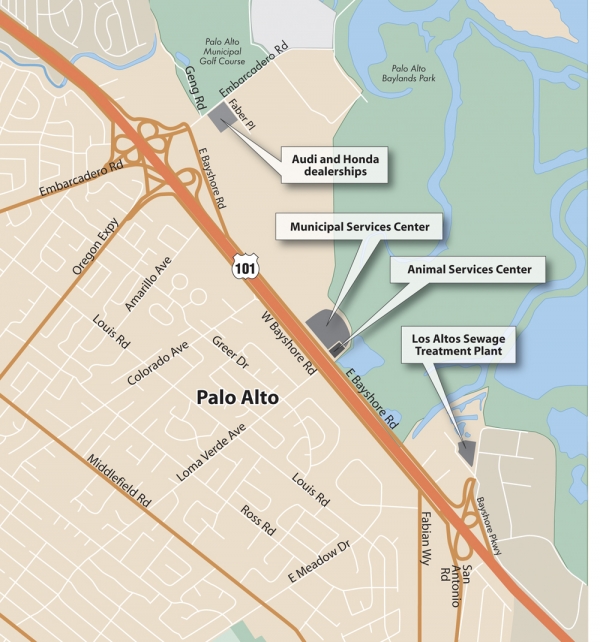
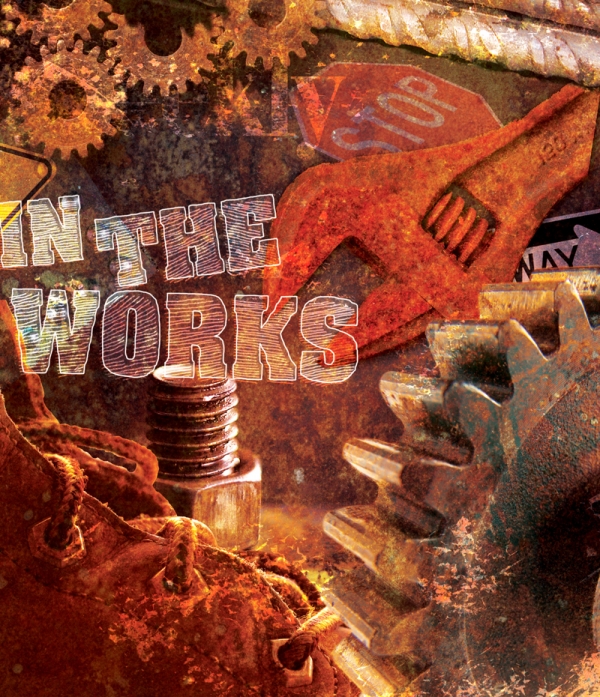
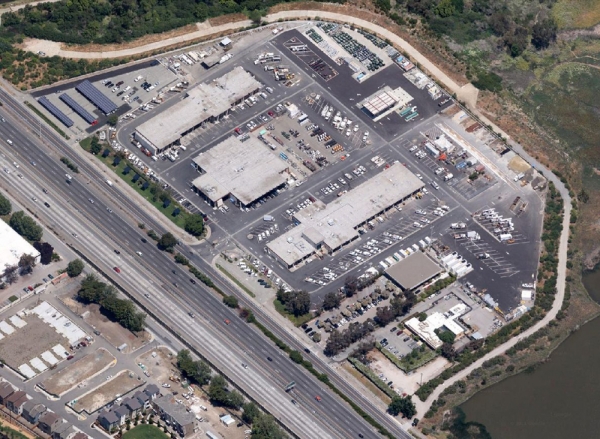


Comments
East Palo Alto
on Feb 10, 2012 at 9:13 am
on Feb 10, 2012 at 9:13 am
The first thing they can do is fix the potholes on East Bayshore Road, and eliminate the redundancy in bike lanes.
And then maybe put up another speed sign near the middle of it reminding everybody who drives down it that the speed limit is 35 mph, not 65 mph.
Another Palo Alto neighborhood
on Feb 10, 2012 at 10:39 am
on Feb 10, 2012 at 10:39 am
> Dornell, who worked for Utilities before moving to Public Works,
> said engineers
> and operations staff members have to communicate on a daily basis,
> a task that is slightly complicated by their physical separation from one another
The City owns a Fiber Optics Network. What it doesn’t own is any insight in how to use it. Video conferencing software has been on the market for years—yet, there seems to be no understanding of the possibilities of shrinking distances like the private sector does.
> Palo Alto responded to the report in 1998 by reinforcing
> the buildings with seismic bracing. But despite this addition,
> the Infrastructure Blue Ribbon
> Commission points out, the buildings are not expected to be
> usable after major quakes
And just how many of these so-called “commissioners” are experts in seismic engineering? At a minimum, the name of the outside firm that is making this claim should be made public, and the magnitude of the quake that they claim will lay these buildings low should be revealed.
> Paul Dornell, who oversees the Public Works operations at the
> Municipal Services Center, puts it bluntly.
> "These are the worst buildings you can possibly have in case of
> an earthquake," he said during a recent tour of the site.
There have been earthquakes in Palo Alto ever since these buildings were constructed. How much damage has been sustained in these earthquakes? And if this is true, then the City, and the Taxpayers, should be asking: “Why were these buildings allowed to be built in the first place?” If they couldn’t get it right then, who is going to guarantee that any new buildings are going to be “earthquake proof” this time around?
A lot of self-serving bunk going on here!
Midtown
on Feb 10, 2012 at 11:50 am
on Feb 10, 2012 at 11:50 am
The municipal Services Center IS ESSENTIAL!!
College Terrace
on Feb 10, 2012 at 12:00 pm
on Feb 10, 2012 at 12:00 pm
Didn't the city retrofit these buildings in the 90's? Also, didn't Dornell retire about 10 year ago? Why is he still unboard giving advice on what he knows nothing about? He does not have an engineering degree, nor any kind of degree for that matter. This is where our tax dollars are going: the hiring of inept and unqualified people who rise to the top on dint of seniority. As Wood Allen said The key to success in America is just showing up.
Another Palo Alto neighborhood
on Feb 10, 2012 at 12:56 pm
on Feb 10, 2012 at 12:56 pm
> Mark Michael, the Infrastructure Blue Ribbon Commission member
> who evaluated the Municipal Services Center site
And what exactly is this person's background? Is he a bonded, certified, structural engineer? If not, why is he involved with decisions for which he has no special expertise, and for which he can not be held accountable if he makes claims that are not valid?
Mountain View
on Feb 10, 2012 at 2:29 pm
on Feb 10, 2012 at 2:29 pm
Paul Dornell is been retired for a few months and still milking it as a consolten. There is the biggest defective ever of people retiring and coming back making 50 to 75 dollars in hour as consultens it's call double dipping wow. Suck the life out of the rest of the workers.
another community
on Feb 11, 2012 at 9:03 am
on Feb 11, 2012 at 9:03 am
Why not just rebuild/modernize MSC in place? Where else in Palo Alto will you find a 16 acre site? Foothills Park?
I think the old Los Altos treatment plant area is a better location for car dealers, if Palo Alto really needs to be involved with that. It is on San Antonio Road with direct access from Highway 101. You could even put a large sign there (on the Los Altos side of course).
another community
on Feb 11, 2012 at 12:22 pm
on Feb 11, 2012 at 12:22 pm
Not surprised by the plethora of "attack the messenger" comments on this (and every other) topic on this thread. The same people whining about making safety and preparedness enhancements now are those who will be whining "victims" later.
These irrational and constant complaints and attacks on city government/workers are predictable, boring, and really not befitting a city that supposedly has a high proportion of educated people.
If these Palo Alto residents are so unhappy, they should move.
Palo Alto Online -- how about a story and comments about what residents like about Palo Alto? Some positive voices on this website might give the negative "regulars" some perspective.
Palo Alto Hills
on Feb 11, 2012 at 7:06 pm
on Feb 11, 2012 at 7:06 pm
I think this statement really says it all, "The possibility of car dealerships leaving Palo Alto is far from hypothetical. In 2001, the city's seven dealerships brought in $3.1 million in sales-tax revenues. The number dipped to $1.6 million in 2006 and to less than $1.3 million in 2010. By 2011, Ford and Nissan departed from their El Camino Real locations and Carlsen Porsche vacated its site on Embarcadero Road. The revenues remained under $1.3 million in fiscal year 2011, according to the city's recent Comprehensive Annual Financial Report. When McLaren-Fisker last year set up a dealership on El Camino Real and Arastradero Road, it was a rare bit of good news after a decade of dramatic decline."
If you frustrate reasonable people, eventually they leave. A tax base is about a positive relationship and community services. What is the cause of dramatic decline? It is not as simple as a temporary change in the economy. It think it has to do with philosophy. The type of people that are critical and obstructive are very different than the people that consider possibilities in an open minded way.
Another Palo Alto neighborhood
on Feb 12, 2012 at 9:54 am
on Feb 12, 2012 at 9:54 am
> If you frustrate reasonable people
Absolutely! The City government (the mix of professional employees and elected officials) has been attacking cars for over two decades. How much money has been spent on "alternative transportation"? Just recently the City Council has endorsed spending of over $100M on bicycle paths, bridges and underpasses. Most of the garages have been driven out of town, there are not very many gasoline stations around, and "transportation" issues seem to be at the top of the complaints of the resident's survey that was conducted for 2011 by the City Auditor.
Anyone think that the "professionals" at City Hall are inclined to recognize any of these things as negatives--since they created them?
The Internet has changed a lot of the way retailing works. Not clear how many people are buying cars on-line, but certainly this change in the way cars get from the factory to the new owners needs to be considered in this discussion.
The idea of moving the so-called "corporation yard" to make room for car dealerships, while the City Council and the planning department people are condemning cars as "Satan's Spawn" is one guaranteed to fail.
Best to incrementally fix this set of buildings over the next twenty years, and quite the big hustle to rebuild them in the grand fashion that Palo Altans "have come to expect".
Another Palo Alto neighborhood
on Feb 12, 2012 at 11:52 am
on Feb 12, 2012 at 11:52 am
By the way, the companies out there in the world (but not so much the US)is looking at very innovative ways to manufacture cars. The following video is a walk-thru the downtown Dresden VW plant:
Downtown Dresden (Germany) VW Plant:
Web Link
While the manufacturing costs are not openly discussed, relative to a more traditional factory, people in Germany can easily travel to the factory to pick up their car. In some cases, the costs of delivery and dealer prep can be saved, making this client "will-call" delivery cheaper for the new car owners.
These sorts of manufacturing sites/non-dealer delivery models could work in California. Obviously too large for Palo Alto, but if there were such a facility somewhere in the Bay Area, then there would be competition between the traditional car dealerships and this state-of-the-art factory. Who on the Palo Alto City Council is prepared to claim that these sorts of plants will never be operating in California and the traditional factory->dealership->customer model will stay the same for decades to come?
The world outside of Palo Alto is changing quickly. Sooner or later, people in Palo Alto will wake up and see that their "leaders" have not been doing the job that they should have been doing, since 1980, at least.
Downtown North
on Feb 12, 2012 at 12:32 pm
on Feb 12, 2012 at 12:32 pm
We cannot have it both ways. Residents complain when the city runs a deficit and has to trim services, yet they stifle efforts to generate new revenue. The need to develop Edgewood and Alma Plaza and address the flight of auto dealerships is not a new problem. It's simply been kicked down the road over and over in order to appease a few very vocal complainers. If we'd been willing to make it happen along the San Antonio cooridor, we could be enjoying the sales tax revenue that mountain view now enjoys courtesy of best buy, etc. Instead we took a closed minded "no big box" approach regardless of location and here we are scrambling for retail revenue. Stanford shopping center would like to expand and add an upscale hotel but, no, not here in Palo Alto we say, that would increase traffic. The list endless. We have to choose. Are we a small town, of 60,000? Or are we the tech capital of Silicon Valley?
I don't like traffic jams or concrete jungles any more than the next guy, but I think if we are sensible, we can maintain our city services and address our infrastructure needs without corrupting our idealic existence.